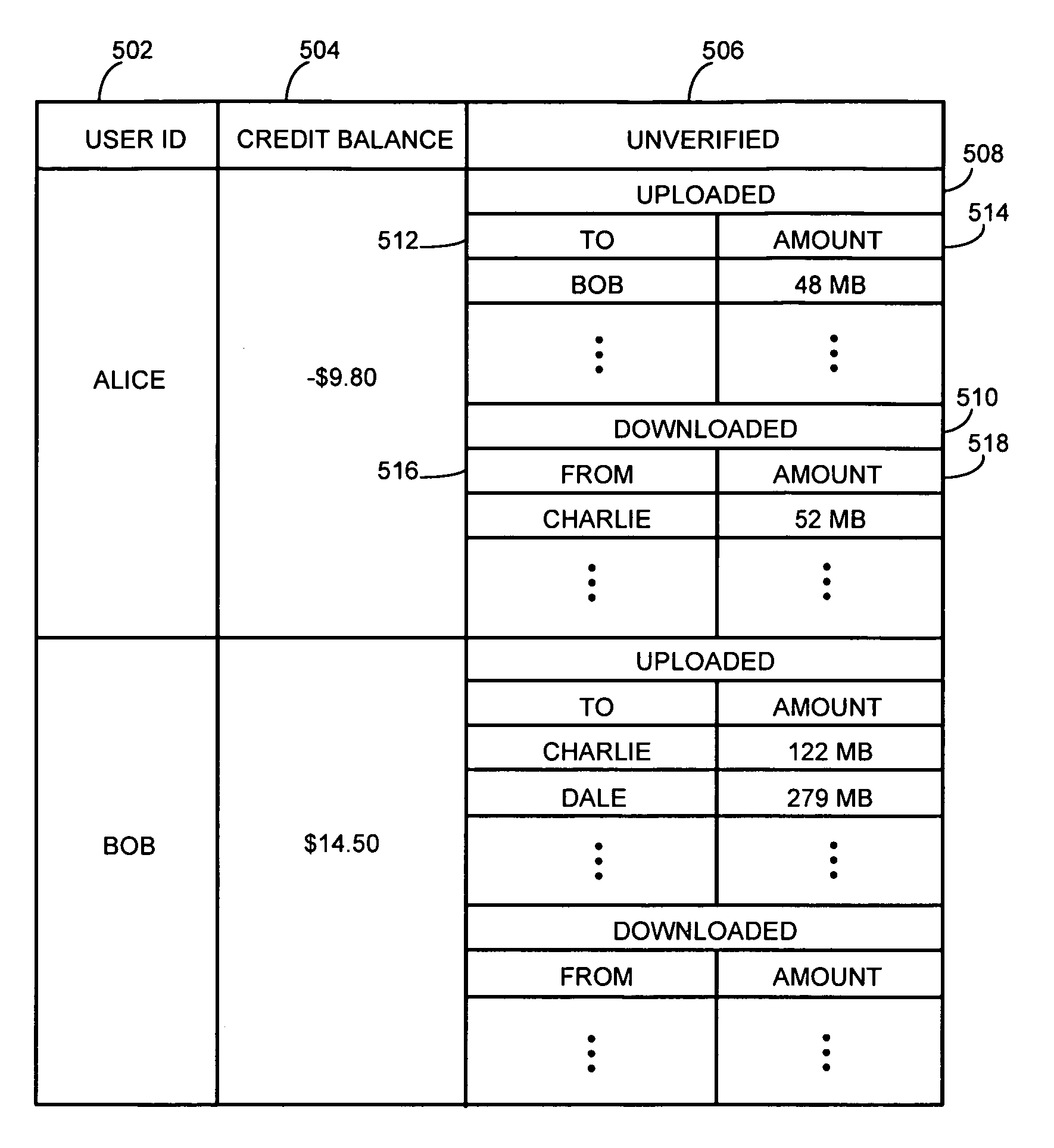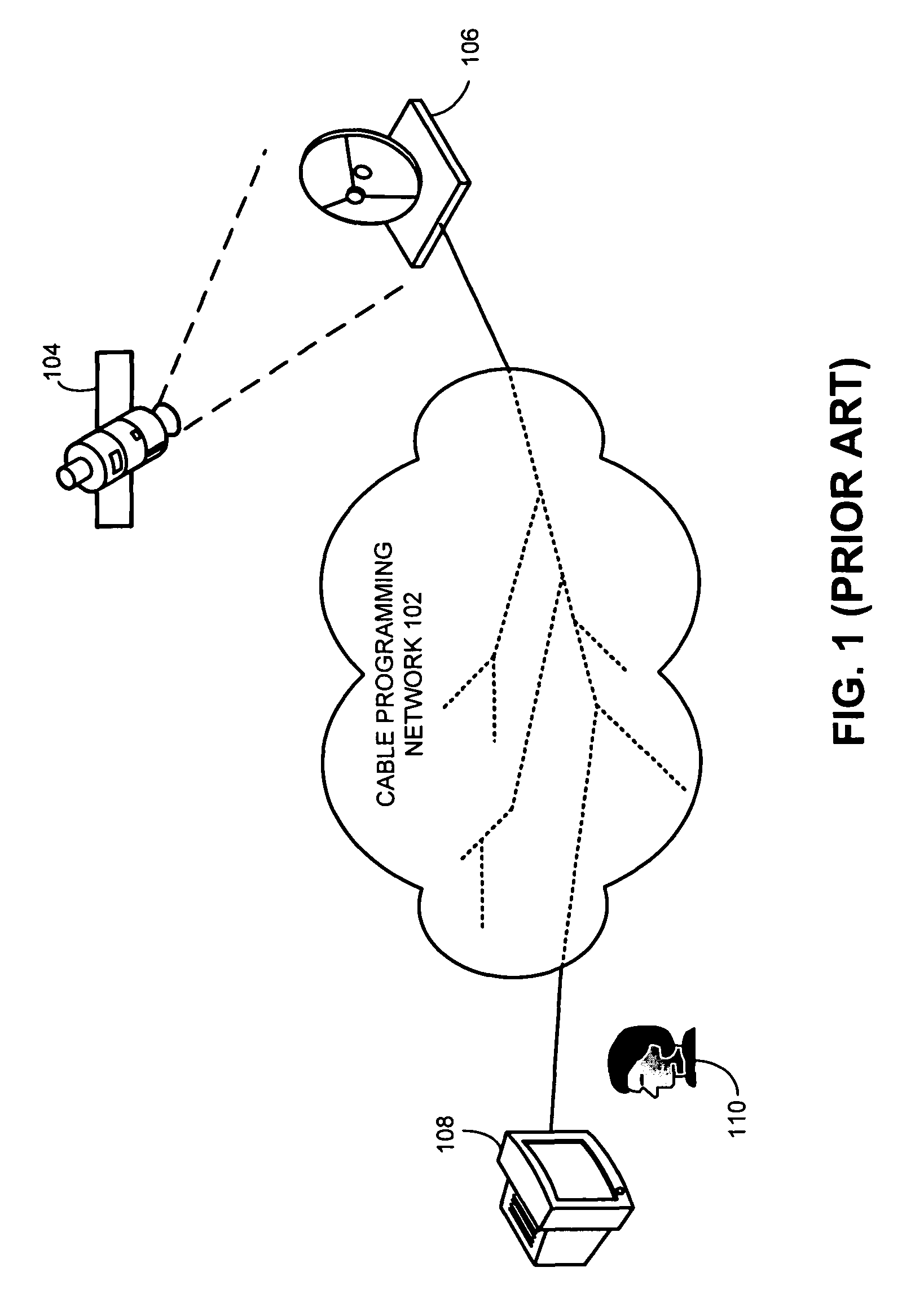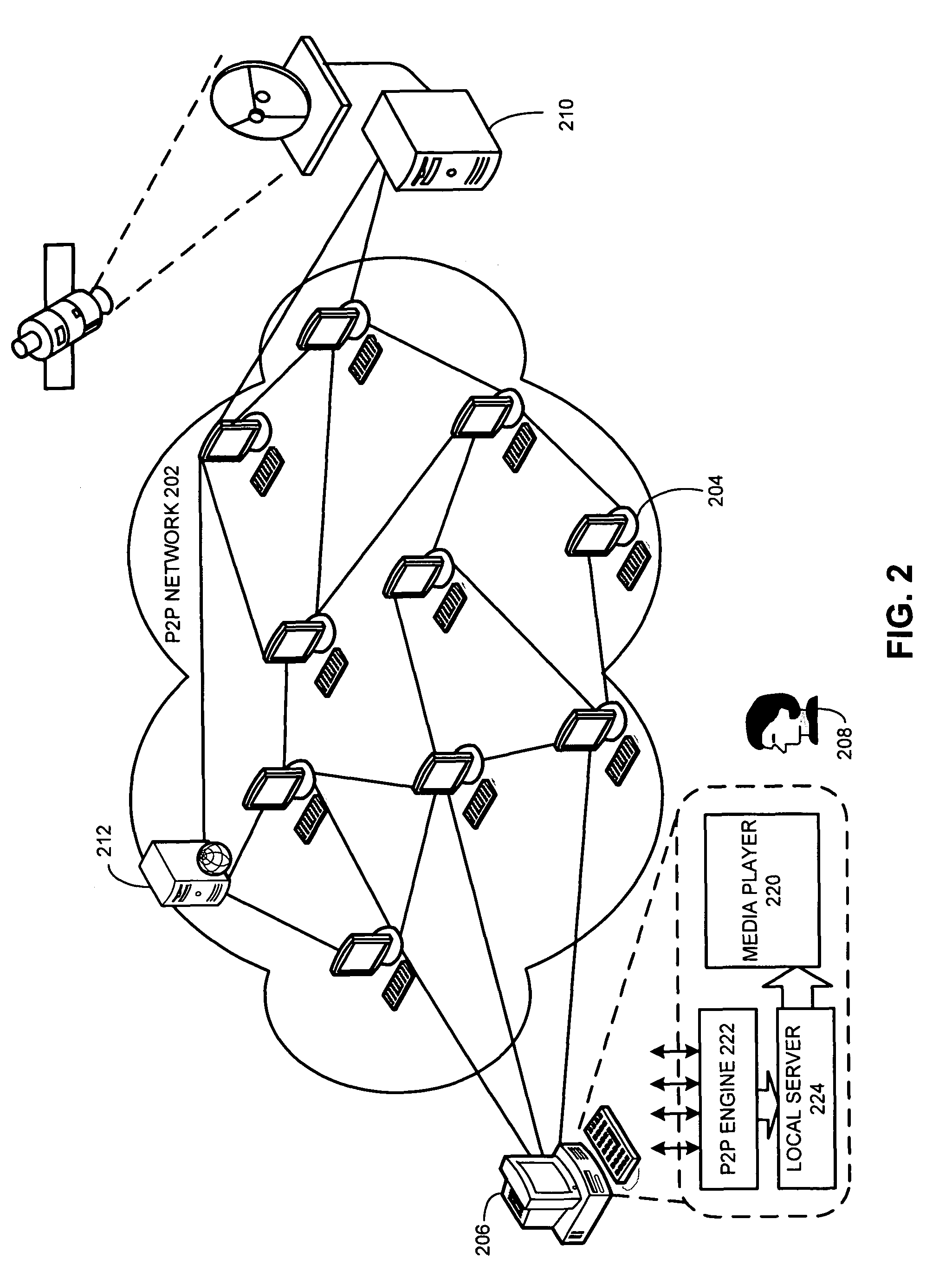System and method for facilitating a credit system in a peer-to-peer content delivery network
a peer-to-peer content and credit system technology, applied in the field of online credit provisioning, can solve the problems of only being offered bandwidth-intensive video signals, existing internet applications that cannot provide effective means for delivering bandwidth-intensive multi-media content to end-users, and bandwidth-demanding video signals such as television (tv) content, so as to facilitate a credit system and encourage data sharing in a p2p network
- Summary
- Abstract
- Description
- Claims
- Application Information
AI Technical Summary
Benefits of technology
Problems solved by technology
Method used
Image
Examples
Embodiment Construction
[0020]The data structures, operations, and instructions described in the detailed description are typically stored on a computer readable storage medium, which may be any device or medium that can store code or data for use by a computer system. Suitable media include, but are not limited to, application specific integrated circuits (ASICs), field-programmable gate arrays (FPGAs), semiconductor memories, magnetic and optical storage devices such as disk drives, magnetic tape, CDs (compact discs), and DVDs (digital versatile discs or digital video discs). Furthermore, a computer system can be any device or system capable of processing data.
Delivery of TV Signals over Cable Programming Networks
[0021]FIG. 1 is a block diagram showing a prior art conventional cable programming network 102 for delivering TV signals to end-users. The head-end of a cable programming network 102 is in communication with a satellite base station 106. A base station 106 receives signals for TV channels relaye...
PUM
 Login to View More
Login to View More Abstract
Description
Claims
Application Information
 Login to View More
Login to View More - R&D
- Intellectual Property
- Life Sciences
- Materials
- Tech Scout
- Unparalleled Data Quality
- Higher Quality Content
- 60% Fewer Hallucinations
Browse by: Latest US Patents, China's latest patents, Technical Efficacy Thesaurus, Application Domain, Technology Topic, Popular Technical Reports.
© 2025 PatSnap. All rights reserved.Legal|Privacy policy|Modern Slavery Act Transparency Statement|Sitemap|About US| Contact US: help@patsnap.com



